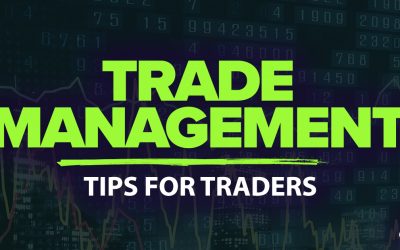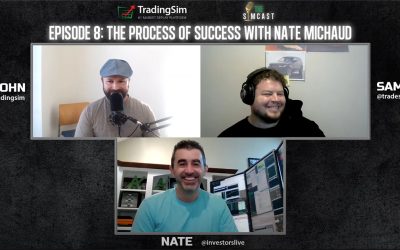There is no such thing as a “perfect trader.” Making mistakes in trading is inevitable. How you handle the mistakes is what separates successful traders from unsuccessful traders. There is nothing wrong with making mistakes, as long as you learn from them. The problem comes in when you start to repeat mistakes over and over again. Every time I make a mistake, I try to take away a lesson so I do not make the same mistake again. Here are a few of the most costly trading mistakes I have made.
Getting Too Biased
Many times in the past, I’d stare at a stock when I am short and think, “ugh, it’s ran too much,” but the reality is it hasn’t. No stock has ever ran “too much.” When you take this approach to day trading, you’re thinking emotionally and “how things could be” vs. what you set out for the trade to be. You are taking a reactive approach instead of proactively planning the trade. You should never enter a trade without an exit plan already in your mind. This helps you avoid the internal debate on whether or not a stock has ran too much. Additionally if you find yourself going to message boards or reading the news to try to ease your thoughts on the trade, that’s a RED light. It doesn’t matter how silly the news (or reaction to the news) is – you need to focus solely on the price action. Biases have no place in trading. Focus on the price action and allow your trading plan to steer you in the right direction.
Adding to a Losing Position
Most of my biggest losers have occurred because I was too biased AND I started adding to the losing position. While your initial position may only be 500-1000 shares, it’s so easy to build up to 5000-10000 shares when wrong, and turn what would have been a $2k loss into a $10-20,000 dollar account buster. This is typical of many traders, including myself at times. Sometimes, it’s just best to sit on your hands and conserve your remaining capital. It’s not always beneficial to “better your average” by averaging up/down because, if the stock goes against you, your loss grows exponentially by 2x, 3x or 5x (whatever size you’ve scaled into). When you are stuck in a losing trade, make sure to stick to your trading plan instead of rationalizing and acting emotionally.
Something @modern_rock told me that’s opposite what feels natural (we have a tendency to average up/down on losing positions) but yet so RIGHT #stocktrading #stockmarket #nyse #nasdaq #daytrade #daytrading #stocks #livetrading #livedaytrading #dastrader #squeeze #tandemtrader #investorsunderground #investorslive #tradingrules #profit #losses #learn A photo posted by Nathan Michaud (@investorslive) on
Crowded Trades
Often times, trades can get super crowded, meaning that everyone is saying one thing but the stock is doing something different. In other words, everyone thinks the news is junk and that the stock is likely to sell off but it keeps going higher and higher. Traders allow their biases to control their trading, and the result can be costly. The likelihood of a squeeze becomes increasingly imminent as more and more traders get stuck in losing positions. Some of the greatest traders (who are typically right in the long run) may be short these names BUT they may be focusing on a different time frame for the trade. It’s important to think about the difference between YOUR time frame and THEIR time frame. Are you looking for an intraday move while they are looking for a 1-2 week fade? The point here is to never be influenced by others, and if you’re trading a stock that keeps doing the opposite of what others think, watch your size and always use caution. A stock never has to do anything, and you need to be prepared for surprises.
Chasing Just to Chase
Sometimes we get anxious and just want to be in a trade. This may be due to the fact that everyone else is in the trade, or simply because you do not want to miss the move. This mentality can lead you to blindly follow others and THEN determine why the trade was made. This is backwards logic because traders should have an exit plan before they even think of entering a trade. No trades should EVER be made because of someone else. Sometimes the best trade is no trade. Be patient and wait for trades to come to you. It’s a lot like after hours trading – sure it may work sometimes, but it’s that one time that it doesn’t that screws you. You need to make sure you are following a calculated trading plan if you want to profit consistently.
Such a simple but yet powerul trading rule !! My best days are always when I focus on the prime set ups vs. trying to nail everything #stocktrading #stockmarket #nyse #nasdaq #daytrade #daytrading #stocks #livetrading #tandemtrader #investorsunderground #investorslive #tradingrules A photo posted by Nathan Michaud (@investorslive) on
Adding in Before Confirmation
Many times I’ll nail a trade and start adding for the sake of adding, without really thinking about it. This is an easy way to ruin your average and get shaken out of the trade. This is how I combat this – Once I’m in a position, I pretend I am not, and look where for a good entry as if I were NOT already in the trade. This allows me to take the emotions out of trading. When the stock sets up again and I can determine a good set risk vs. reward, I will add into the trade (aka adding to a winner).
Very true for many traders including myself !! Great words @modern_rock thanks !! #daytrading #profit #learn #tandemtrader #investorsunderground #investorslive #tradingrules #losses #learn #chatroom #success #daytrading #stocks #livetrading #livedaytrading #squeeze #forex #nyse #nasdaq A photo posted by Nathan Michaud (@investorslive) on
What Are Your Biggest Trading Mistakes?
As you can see, I’ve made mistakes throughout my trading career, but I am still profitable. Trading is an ongoing learning process, and each mistake presents an opportunity to improve your trading. Whenever you have a losing trade, make sure to focus on why the trade went against you. This will help you avoid the mistake in the future. Being conscious of your shortcomings is the first step towards rectifying them and improving your trading.










Excellent job man. I have been a member for a year and I can tell in that year alone, your writing skills have improved tremendously. The content has always been top notch, but your expressions have improved.
When I make a mistake and the mistake costs me money I often become very frustrated with myself. I am learning to relax and let the trade come to me, and not be so judgmental of my losses and be more accepting of my mistakes and mentally move on to the next trade as quickly as possible. This new attitude is changing my relationship to money. Easy come easy go. I am not in a war with the market or it’s maker. I can create a better more profitable trade tomorrow. Thanks for sharing.
Thanks for sharing your advice. I became a part time trader this year dealing in ETFs. I’ve made some tremendous mistakes that I have learned from. I think dealing with patience, anxiousness, and fear of missing out are the three emotions that get to me. But I’ve learned along the way and I am getting better–and smarter–in my trading.
Thanks Nate. This post is spot on…I made all those mistakes today and lost all my profits for the week…back to drawing board now and LEARN from those mistakes.
Just starting out, thank You Nate
I’m new to trading and appreciate hearing from others as I’ve made these same mistakes.
Thank you for elaborating on how to “escape” from these mind created traps.
My problem is the price goes up & down and when it drops within pennies of my purchase price I start begging to please just go up 10 cents and I sell. Of course the stock explodes and I realized I got out way too soon.
Thanks a lot Nate
ALL of these are RIGHT ON, and have done them all. It’s truly so good to know I’m not alone, and this is all part of the learning curve. I beat myself up so much when I make a mistake, but then after reading something like this from such an experienced trader as yourself I know it’s okay AS LONG AS I’VE LEARNED AND DON’T REPEAT THE SAME MISTAKES! Thank you for taking the time to write this!
Nice article
Thank you, It really helps me to read this.
This is quite true and well summarized.
Hey there Nate thanks very much for highlighting this topic, I believe in having an assessment phase, after each trading session, this is the point where I put the most time, the assessment process and in the preparation process. A very important aspect to developing and growing as a trader. This I believe is where you develop your edge. Cheers very grateful for the lesson today. Keep well and safe Nate, Pete